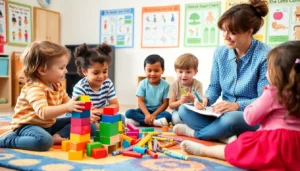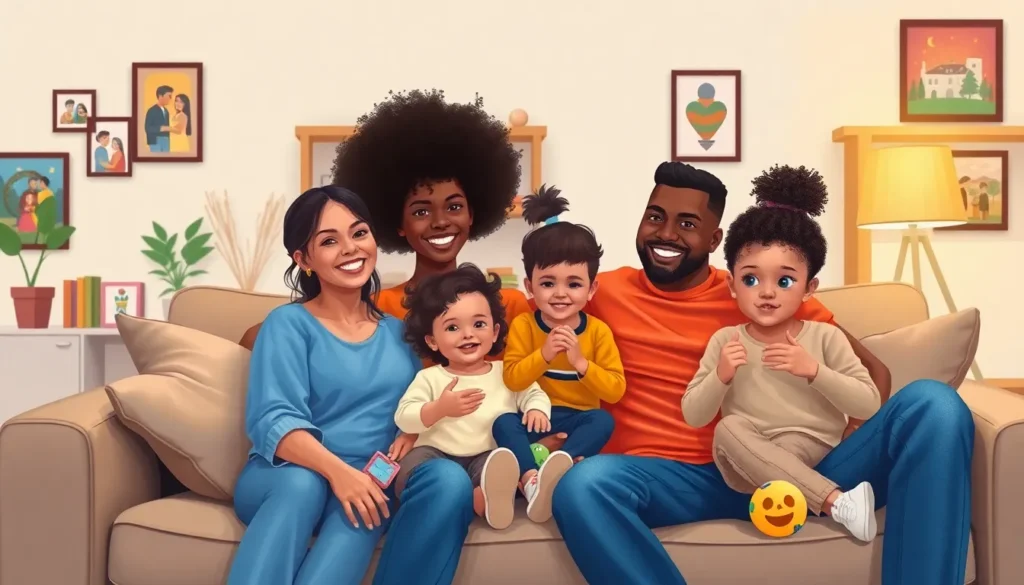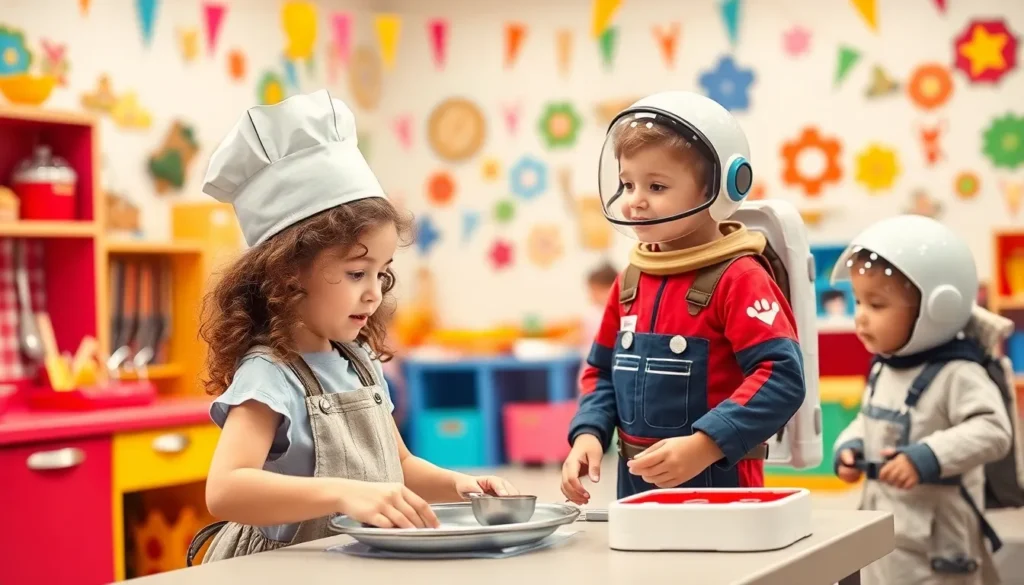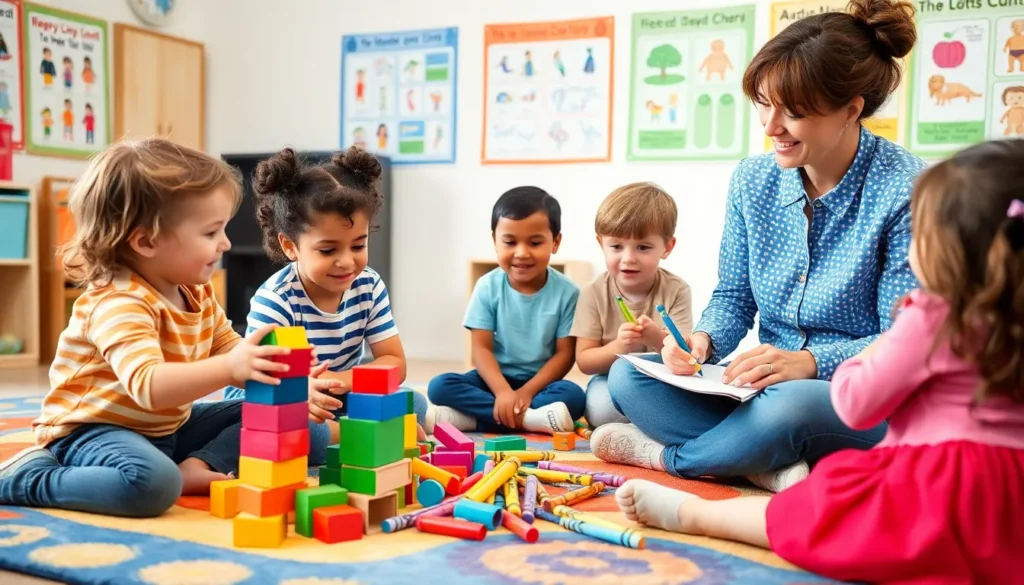Table of Contents
ToggleFostering and adoption might sound like two sides of the same coin, but they’re more like apples and oranges—both fruit, but with very different flavors. When someone thinks about giving a child a loving home, they often wonder which path to take. Is it a long-term commitment or a temporary arrangement? Spoiler alert: it’s not just about who gets the last cookie!
Overview of Fostering and Adoption
Fostering and adoption serve distinct roles in child welfare, though both aim to provide a nurturing environment for children in need. Fostering involves temporarily caring for a child, often due to family disruptions. Families may take in children until circumstances improve, or until a permanent solution arises.
Adoption represents a legal commitment to raise a child permanently. It establishes a parent-child relationship that carries lifelong responsibilities. Families often perceive adoption as a way to expand their family, sometimes through biological, international, or domestic channels.
While fostering may lead to adoption, the two processes differ significantly. Fostering focuses on short-term care, with the goal of reunification with biological families. Adoption, however, requires a comprehensive legal process to finalize parental rights.
Both options require specific requirements for prospective parents. Fostering mandates licensing through state agencies, whereas adoption requires home studies and background checks. Training programs also prepare individuals for both forms of child placement.
Life experiences differ in both situations. Foster parents often face emotional challenges due to the temporary nature of their role. Adoptive parents generally experience a sense of permanence and stability once the process concludes.
Understanding these differences clarifies the motivations behind each choice. Aspiring parents should weigh the long-term implications of providing care in either scenario. Both fostering and adoption create opportunities to change lives, even if the level of commitment differs.
Key Differences Between Fostering and Adoption
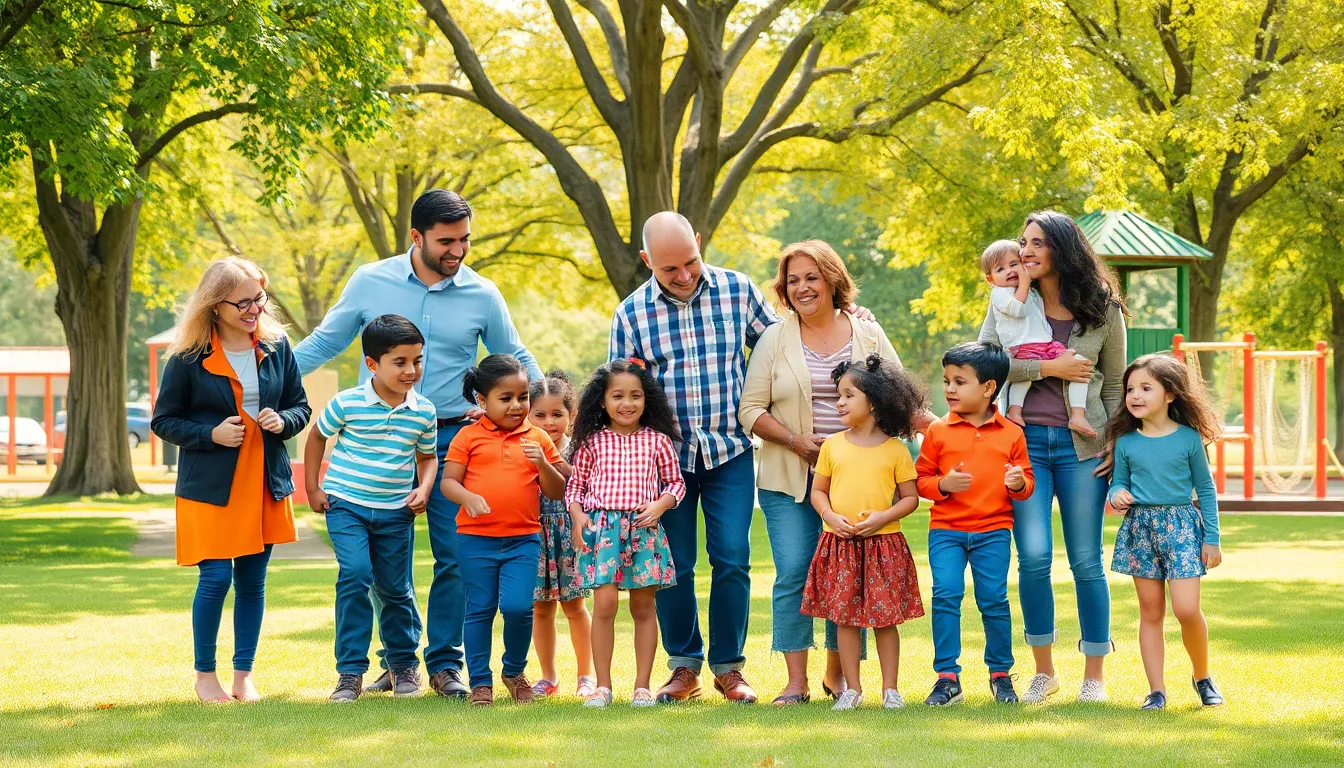
Understanding the key differences between fostering and adoption is essential for prospective parents. Each option offers unique qualities that cater to specific needs.
Legal Status
Legal status significantly differs between these two options. Fostering establishes a temporary guardianship, allowing the child to remain in the care of foster parents until they can return to their biological family. Adoption, conversely, involves a lengthy legal process that permanently transfers parental rights from biological parents to adoptive parents. Adoption grants full legal custody, making the adoptive parents the child’s permanent caregivers. These differences in legal status can impact the responsibilities and rights of caregivers significantly.
Duration of Care
Duration of care is another critical distinction. Foster care typically lasts for weeks to years, depending on the child’s circumstances and the goal of reunification with biological parents. Some children may return home while others may eventually transition into adoption. Adoption provides a permanent solution, ensuring the child remains with the adoptive family for life. In this sense, the duration of care associated with fostering is inherently temporary, while adoption creates a lasting family bond.
Parental Rights
Parental rights also differ between fostering and adoption. Foster parents do not possess legal rights over the child; these rights remain with the biological parents or the state. In contrast, adoptive parents gain full parental rights upon finalization of the adoption process. This transition empowers adoptive parents to make critical decisions about the child’s upbringing, education, and medical care. Understanding these differences in parental rights is vital when considering which path to pursue.
Emotional Aspects of Fostering and Adoption
Emotional experiences differ significantly in fostering and adoption.
Impact on Children
Children in foster care often face instability and uncertainty. Emotional highs and lows characterize their experiences. Many kids develop attachment issues due to frequent placements. Trust becomes a complex hurdle when facing temporary homes. Conversely, adopted children usually benefit from a sense of permanence. Stability offers them emotional security, allowing them to form lasting relationships. Adoptive children generally feel a sense of belonging. Their experiences often include fewer disruptions than those of foster children.
Impact on Foster and Adoptive Parents
Foster parents often navigate a challenging emotional landscape. They may experience attachment to the children while knowing their time together might end. Transformative experiences occur when foster parents witness growth in children, despite the emotional strain. Adoptive parents typically enjoy a deeper emotional satisfaction. Their commitment fosters a unique bond with their children. Long-term relationships become a source of joy and fulfillment. Emotional resilience builds stronger family connections through shared experiences. Each parenting journey highlights different emotional rewards and challenges.
Benefits and Challenges
Fostering and adoption each present unique benefits and challenges that potential parents must consider.
Benefits of Fostering
Fostering offers flexibility in caring for children in need. A placement might last from days to years, allowing for dynamic experiences. Families often find fulfillment in supporting children during crisis moments. This arrangement helps children maintain connections with their biological families whenever possible, promoting a sense of belonging. Financial support often follows foster placements, alleviating some costs for caregivers. Additionally, foster parents may receive valuable training and resources, enhancing their skills in child care and emotional support.
Benefits of Adoption
Adoption creates a permanent family bond that ensures stability for children. An adopted child gains legal security and a lasting family structure. Families often experience deep emotional satisfaction in building their families through adoption. The shared experiences during milestones contribute to strong family ties and a sense of belonging. Adoptive parents typically gain full parental rights, allowing them to make decisions about the child’s upbringing. Furthermore, the joy of experiencing lifelong relationships often leads to fulfilling family dynamics.
Challenges in Fostering
Fostering presents challenges related to emotional attachment and uncertainty. Temporary placements can lead to feelings of instability for both children and foster parents. Children may struggle with trust due to previous separations, impacting relationships. Additionally, navigating the system can be complex, requiring cooperation with social workers and court systems. Foster parents often face emotional strain knowing their role might be transient. Balancing advocacy for the child’s needs against the potential for reunification with biological families can also be difficult.
Challenges in Adoption
Adoption involves significant legal processes, which can be lengthy and complex. Prospective parents must complete home studies and navigate extensive paperwork before finalizing the adoption. The emotional journey includes managing expectations, particularly when dealing with potential challenges from biological families. Additionally, adopted children may need support in adjusting to their new homes, reflecting on their past experiences. Adoptive parents must prepare for unique emotional needs that may arise over time. Ongoing adjustments and support become essential in nurturing a healthy, thriving family atmosphere.
Choosing between fostering and adoption is a significant decision that impacts both the caregiver and the child. Each path offers unique rewards and challenges that cater to different needs and circumstances. Understanding the differences in commitment, emotional experiences, and legal implications is essential for anyone considering these options.
Fostering can provide immediate support and stability for children in need while maintaining connections with their biological families. Adoption, on the other hand, creates a lasting bond that fosters emotional security and family unity. Ultimately, both avenues play crucial roles in child welfare and can lead to transformative experiences for everyone involved.




